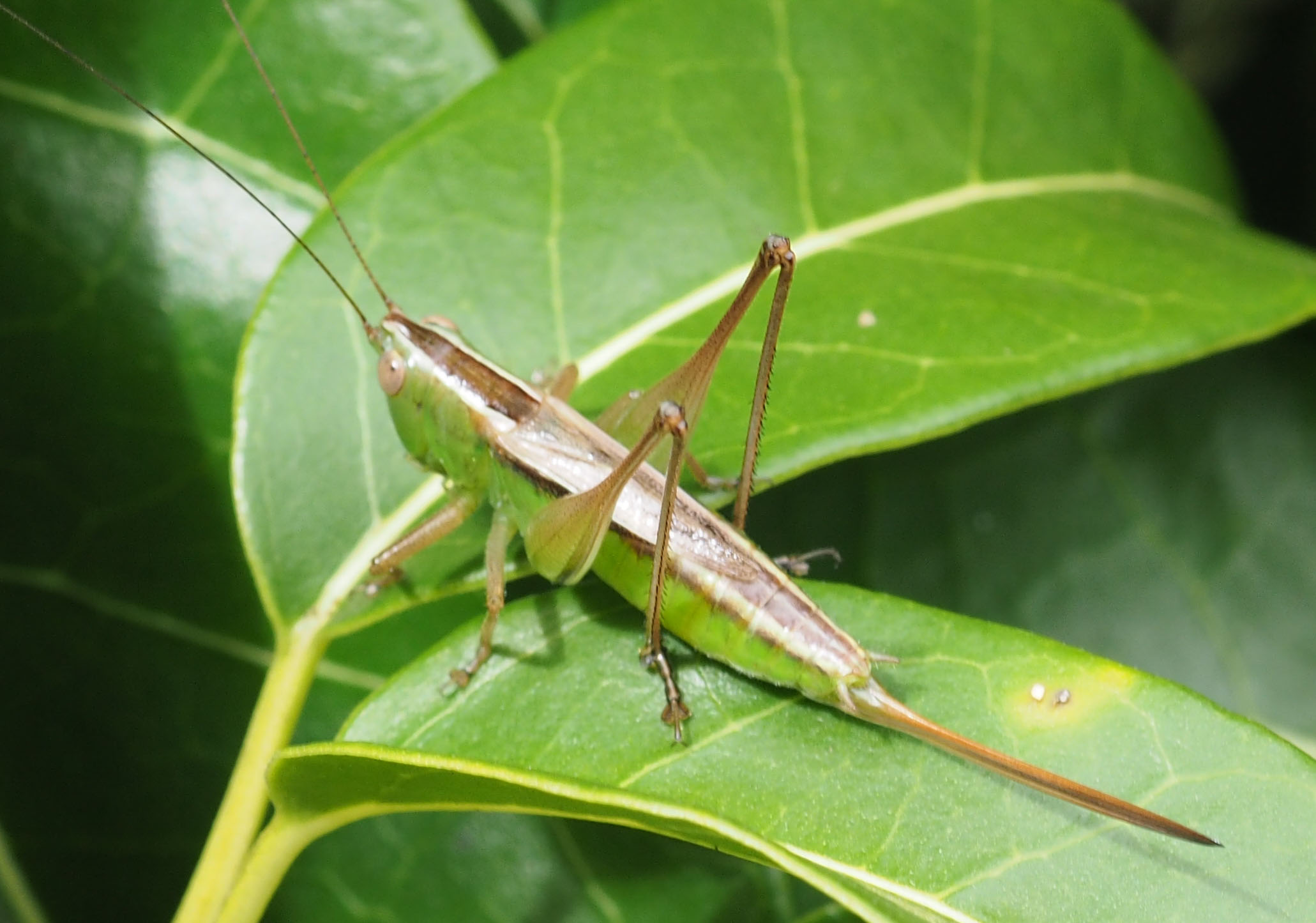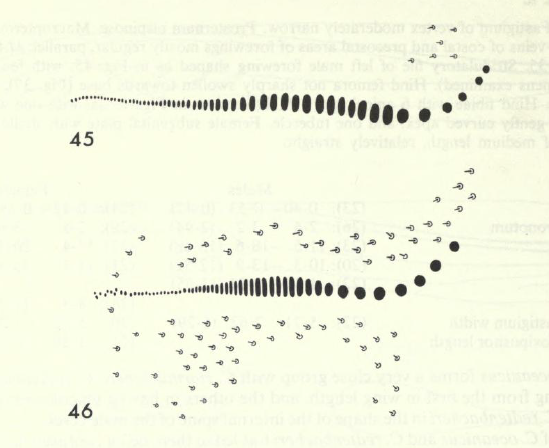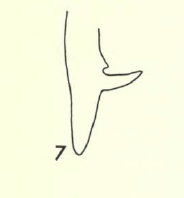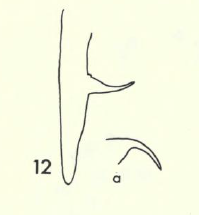Conocephalus, Conocephalinae

Workbook
Unsure of the species of Conocephalus we find on the block.
male 8/1/19
female nymph 8/1/19
female 22/1/15
female 22/1/15
female 26/1/15
Our species doesn’t have long wings that extend past the end of the body, so it is not C. upoluensis as Rentz says that this species is only known from a long-winged form. Pitkin (1980) confirms that C. upoluensis is macropterous.
Is it the short-winged form C. semivittatus? Colour pattern doesn’t match image of this species on p.104 of Rentz’s book very well. But it does appear to be a green colour morph of C. semivittatus identified on Canberra NatureMap
Pitkin, L.M. (1980) A revision of the Pacific species of Conocephalus. Bulletin of the British Museum (Natural History) Entomology Series v. 41 No. 5: 315-355
Conocephalus semivittatus
Fastigium of vertex wide. Prosternum bispinose. Macropterous or brachypterous. Forewings with dark pigmentation in costal and precostal areas, and usually with spot at posterior margin (Fig. 28).
Cross-veins of costal and precostal areas of forewings irregular or reduced. Stridulatory file of left male forewing shaped as in Fig. 45 and 46.
Hind femora with 1-9 externoventral spines. Hind tibiae with 6 apical spurs. Male cerci shaped as in Figs. 7-9, with one well-developed internal spine and one tubercle.
dorsal and (b) externolateral views of cercus of male C. semivittatus. 7. C.s.semivittatus. 8,9. C.s.vittatus
Female subgenital plate with excised or truncate apex. Ovipositor of short to medium length, relatively straight.
There are two subspecies of this species, C. s. semivittatus occurs in the south. Male cerci of this subspecies are comparatively long and slender in proportion to size (Fig. 7). Ovipositor length at least 10.5mm. Left forewing and sometimes right with spot at posterior margin (Fig. 28). Male cerci shaped as in Figs. 7, 8. Female subgenital plate with excised apex.
Conocephalus upoluensis
Fastigium of vertex wide. Prosternum bispinose. Macropterous. Forewings with dark pigmentation in costal and precostal areas and comparatively small dark spots elsewhere; with or without dark line or spot towards base of posterior margin, usually faint if present (Fig. 30); light and dark pigmentation usually not strongly contrasted. Cross-veins of costal and precostal areas of forewing irregular. Stridulatory file of left male forewing shaped as in Fig. 45 and 46. Hind remora unarmed ventrally. Hind tibiae usually with 4 apical spurs (ventral pair missing). Male 10th abdominal tergite nearly unmodified or slightly produced at apex but not bent downwards (Fig. 41). Male cerci moderately slender in apical part, with one internal spine and usually with one minute tubercle or slight swelling (Fig. 12). Ovipostior moderatly short, relatively straight.
fastigium width male 0.59-0.86mm (0.70) female 0.59-0.81mm (0.74)
median length of pronotum male 2.6-3.8 (3.09) female 2.7-3.7 (3.18)
forewing length male 13.3-22.2 (17.13) female 14.2-23.0 (18.31)
hind femur length male 10.8-15.1 (12.92) female 11.8-16.5 (14.26)
ovipositor length 6.8-11.0 (8.93)
Male cerci less slender in the apical part. Male tenth abdominal tergite nearly unmodified or slightly produced at apex but not bent downwards.
posterodorsal view of male tenth tergite of C. upoluensis
Ovipositor length not more than 11.0mm.
This is a workbook page … a part of our website where we record the observations and references used in making species identifications. The notes will not necessarily be complete. They are a record for our own use, but we are happy to share this information with others.












